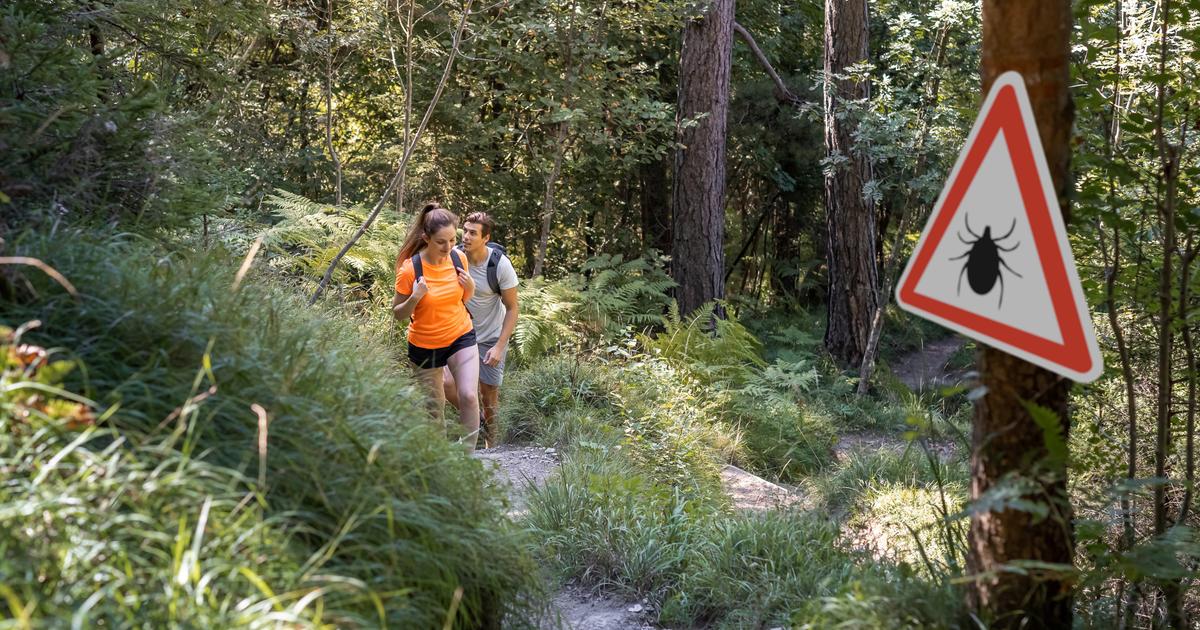Public Health France points to an increase in new diagnosed cases of Lyme disease over the last twenty years.
Can we attribute this increase, even if only in part, to climate change and changes in our environment?
“
There is no clear and simple answer because the system is particularly complex and involves many interacting actors,
” explains Olivier Plantard, research director at INRAE, specialist in eco-epidemiology and animal health.
In Europe, it is the Ixodes ricinus tick (in the form of larva, nymph or adult) which serves as a vector for this disease, by carrying a pathogenic bacteria of the genus
Borrelia
.
By biting a host, an infected tick can then transmit the bacteria.
The optimal temperature conditions for the development of a tick, whose life cycle extends over two to three years, are between 15 and 25°C.
Outside of this interval, the animal's development speed is slowed down, ticks can even enter a period of slowed life (diapause).
Due to climate change, “
diapause periods could be shorter in the future
,” estimates infectious disease specialist Solene Patrat-Delon.
Warming also allows ticks to spread into areas that were previously too cold for them.
“
Scientific articles have clearly shown over the past 20 to 30 years a rise towards the north of Scandinavia of the Ixodes ricinus tick as well as at higher altitudes in the mountains
” explains Olivier Plantard.
However, temperature is far from being the only parameter that modifies the development of the tick.
It is influenced by humidity (they prefer very humid air) but also depends closely on other living organisms.
And sometimes in a surprising way... Researchers have, for example, noted a close relationship with... the quantity of acorns!
In fact, the tick likes to attach itself to rodents which consume acorns.
The more acorns there are, the more rodents there will be and the more the tick will be able to reproduce and transmit the bacteria.
However, climate change modifies the seasonality of plants, which in turn modifies the behavior and distribution of animals that feed on plants.
Variation in animal populations thus modifies tick populations, which modulates the dynamics of the disease.
Everything is connected.
This is also the basis of the “One health” concept, which considers that human, animal and plant health should not be dissociated from each other.
Dilution effect
And it can become even more complex.
“
The transmission competence is different depending on the species bitten by the tick
,” reports infectious disease specialist Solene Patrat-Delon.
“
Deer have an efficient immune system which prevents the multiplication of the bacteria causing Lyme borreliosis.
» Deer therefore participate in a “
dilution effect
”.
Their presence within ecosystems helps reduce the probability that a tick will be contaminated by the bacteria, unlike micromammals such as voles.
Building an epidemiological model integrating the three categories of actors (bacteria, ticks and hosts) with their diversity and variability is particularly complex.
And understanding how this evolves with warming and changes in the environment is even more complicated.
According to researcher Olivier Plantard, the fight and prevention against Lyme disease would benefit from a rapprochement between epidemiologists, veterinarians and ecologists.
“The
disease is not subject to mandatory reporting by doctors, so we have deprived ourselves of a lot of information which would nevertheless be particularly useful for better understanding the environmental factors favoring the risk of contracting the disease.
»

